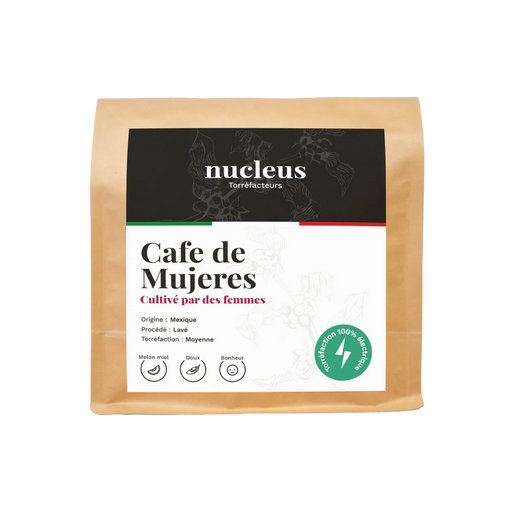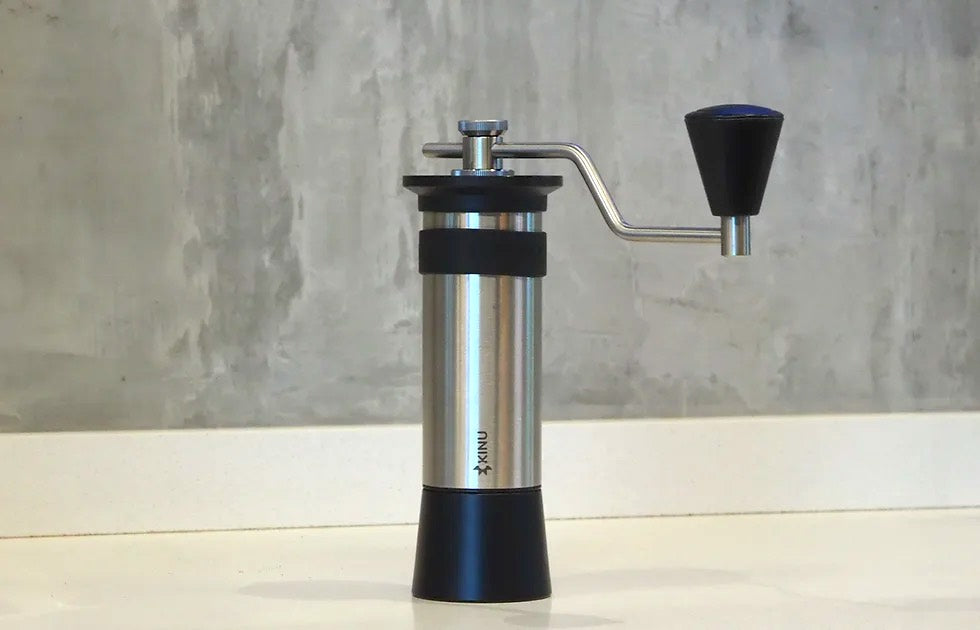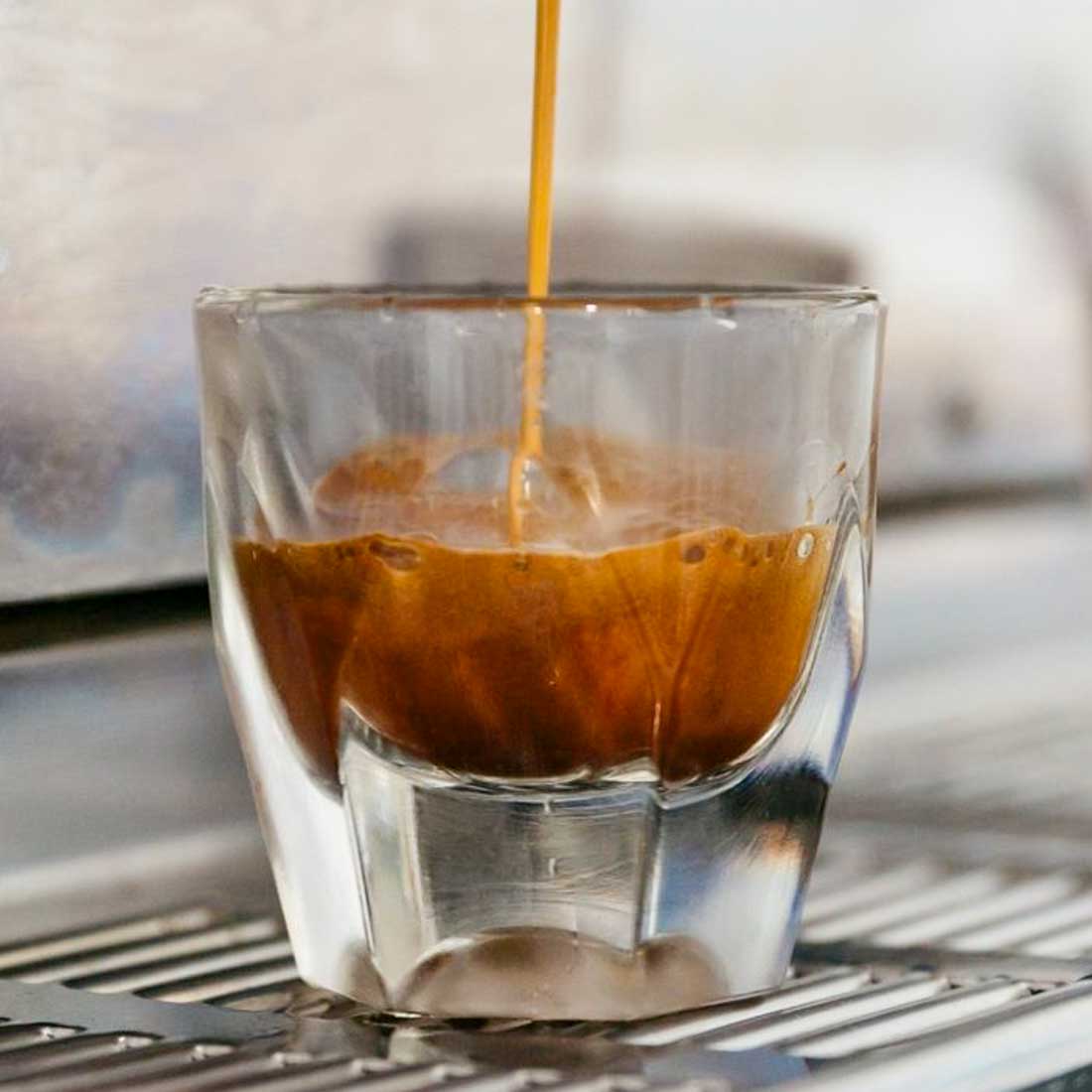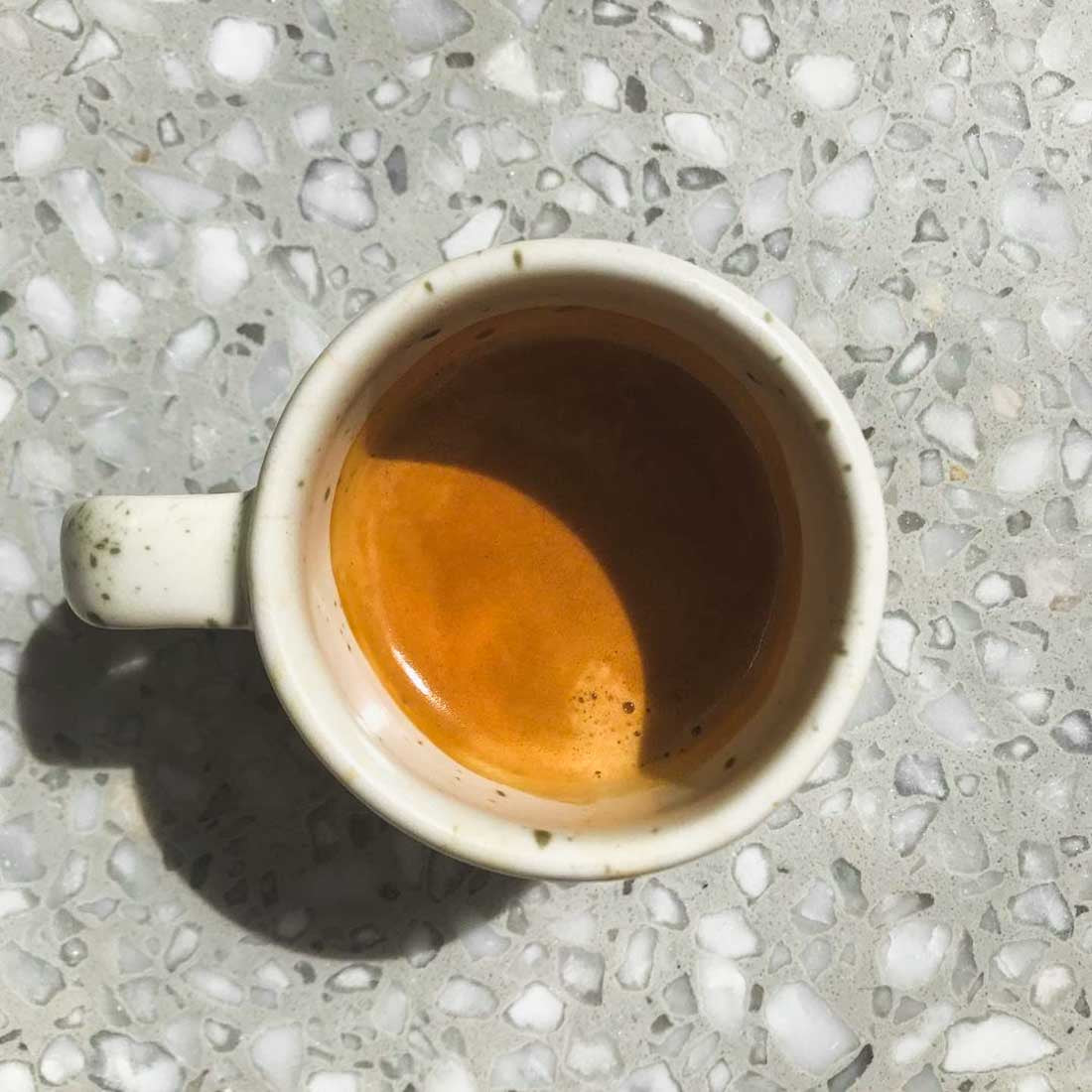If you own a home espresso machine, it’s obvious that you’re pretty serious about coffee. But knowing how to use that equipment to make the perfect cup of coffee is sometimes trickier than we first think. There are lots of pitfalls and bad habits even professional baristas encounter which can really impact the finished product.
Espresso is the foundation of your drink, so it’s the first place to start when improving our barista technique. If your espresso isn’t right, it will have a knock-on impact on the rest of the drink, no matter what else you add, or how good your milk-steaming method is. And one of the most often overlooked parts of the espresso-pouring process is tamping. With just a few small tweaks, improving your tamp can have an enormous effect on the overall quality of your coffee.
Why do we tamp espresso?
When a dose of coffee is brewed in an espresso machine, pressurized water is pushed through the bed of ground coffee in the portafilter basket. The timing of this process is key to the flavour outcomes.
If the water spends too little time in contact with the ground coffee, the resulting espresso will be weak, insipid and sour. We call this type of espresso ‘under extracted.’
If it takes too long for the water to push through the puck of coffee, you will have an espresso which is bitter, dark and unpalatable. This is known as ‘over extracted.’
An espresso which is the result of perfect timing will taste well balanced and delicious. This represents perfect extraction which is when the water has had just enough time to collect all the coffee’s delicious flavours, oils and caffeine, without getting to the bitter, less desirable flavours which come from deeper within the ground coffee pieces.
So, how do we achieve this goldilocks zone of timing? The answer (especially if your grinder is properly calibrated) is all in the tamp.
Tamping the coffee performs 3 main functions:
Compacting the coffee to slow the flow of water
Compacted coffee presents more resistance to slow the flow of water through the grounds. Coffee which is not tamped will allow water to rush through, and coffee which has been tamped too hard will slow the water too much, or sometimes stop it completely.
Removing air pockets from within the ground coffee
Lurking air bubbles within your coffee bed can disrupt the steady flow of water through the grounds. The difference in resistance between an area of coffee vs an area of air creates an inconsistent flowrate: The water moves fast through some areas and slow through others, risking a mixture of under and over extracted coffee in one cup.
Flattening the coffee bed so it’s all one level
A wonky coffee bed can give much the same impact as above. Water will flow via the path of least resistance and if there is less coffee on one side of the basket than the other, it will soak its way through there quicker. This coffee extraction problem, known as ‘channelling,’ leaves one half of the coffee over-extracted and one half barely touched by the water.

What is a good tamping technique?
Distribute the coffee
Once you’ve dosed your coffee, it’s usually in a high pile in the middle of the basket. A crucial part of the tamping process is making sure the coffee is level and distributed evenly.
Some people opt to do this manually, by shaking or tapping the portafilter. The most precise and sure-fire way of doing this is actually to use a distribution tool such as this. This handy gadget uses the Weiss Distribution Technique (WDT) to distribute the coffee evenly and break up clumps.
Antony Douglas used WDT during his 2022 Australian Barista Championship routine. “It’s the best distribution method that I have used because it’s the only technique that evenly distributes ground coffee from top to bottom, as well as side to side,” He said.
Rest on a flat surface
Now that the coffee is evenly distributed through the basket, it’s best to rest it on a flat surface to avoid upsetting or tilting the grounds. Never tamp in the air or at an angle. Using a good quality rubber tamping mat protects work surfaces and keeps the portafilter from slipping.
Tamp firmly and evenly
Some baristas will swear by 30lbs of pressure, some less than that for the ‘perfect tamp.’ In real terms, even if we could tell you what that feels like for you in your kitchen, a lot of people are working on debunking this statement anyway.
Logically, you need to tamp hard enough to compact your coffee into a decent puck, and to squash out any air bubbles - if there are even any left after using the WDT tool. Stand squarely over your portafilter and push firmly down through your upper body, but not so hard that you’re lifting up your heels!
A great way to gauge tamping strength if you’re still not sure is to observe professional baristas and work. And even better (if slightly eccentric way) is to ask them to show the strength of their tamp on your hand so you can begin to feel it for yourself.
A key part of this step is to tamp evenly. If you’re tamping at and angle you will achieve a slanted coffee-bed and an inconsistent extraction.
All the way to the edges
Precision in tamping requires more than just the right amount of pressure, it also necessitates attention to detail, particularly to the edges of the portafilter. Coffee that is distributed evenly across the basket but unevenly tamped can still lead to channeling and poor extraction. That's why it's vital to tamp all the way to the edges, ensuring that every last coffee grind is compacted.
To effectively tamp the sides of the portafilter, a standard tamper may fall short. That's where a precision tamper excels. They are specifically made to match the diameter of the portafilter basket, which ensures an optimal edge-to-edge tamping experience.
Common tamping mistakes
Do not make these mistakes: This is a great point to prevent some common tamping mistakes that even some professionals are still doing.
Double tamping
If your tamp is decent, you only need to do it once. Going back and doing it again only adds more room for error. Tamp once. Tamp straight. Tamp confidently.
Polishing
This refers to spinning the tamper on the surface of the coffee once the tamping has been completed. The aim of polishing is to leave a smooth, clean surface on the top of the coffee before extraction. In reality, this makes absolutely no difference to extraction and can be counter intuitive. A wonky polish could un-level the surface of your coffee and lead to channelling. It’s best to avoid it altogether.
Clean up
The final thing to do before placing your portafilter into the group head is to give it a clean-up. Creating a tight seal between the portafilter and the group head gasket is vital and stray coffee grinds on the rim of the basket or around the portafilter can break the seal and spell disaster for your espresso.
Avoid this by dusting off the basket and portafilter, ensuring everything is smooth and clean, ready for that perfect extraction.
Enjoy!














Comments
There are no comments.
Your comment